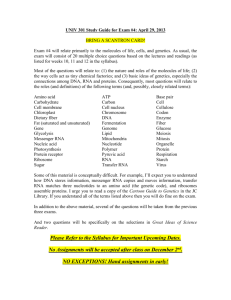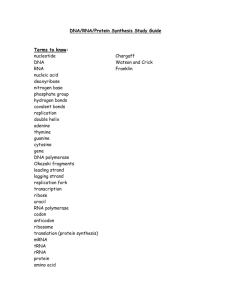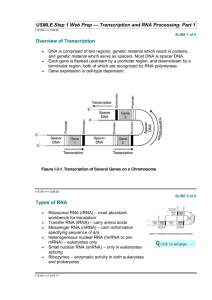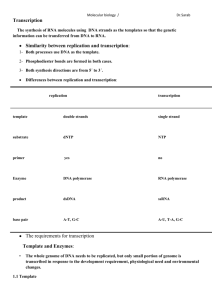Nucleic Acid Table
advertisement
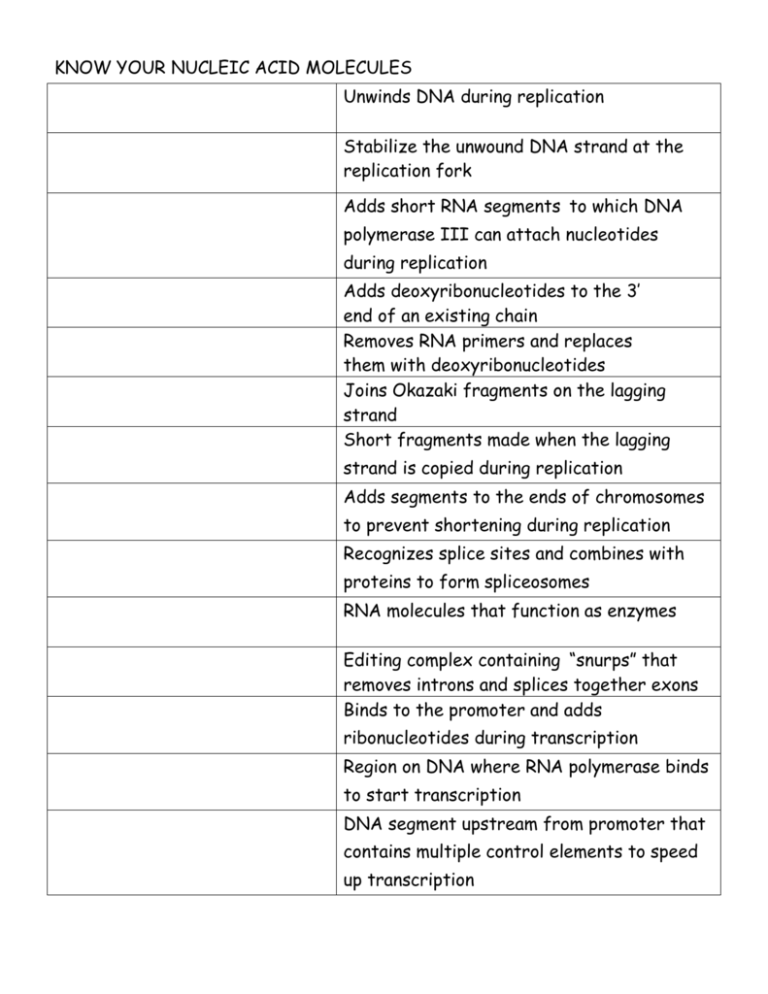
KNOW YOUR NUCLEIC ACID MOLECULES Unwinds DNA during replication Stabilize the unwound DNA strand at the replication fork Adds short RNA segments to which DNA polymerase III can attach nucleotides during replication Adds deoxyribonucleotides to the 3’ end of an existing chain Removes RNA primers and replaces them with deoxyribonucleotides Joins Okazaki fragments on the lagging strand Short fragments made when the lagging strand is copied during replication Adds segments to the ends of chromosomes to prevent shortening during replication Recognizes splice sites and combines with proteins to form spliceosomes RNA molecules that function as enzymes Editing complex containing “snurps” that removes introns and splices together exons Binds to the promoter and adds ribonucleotides during transcription Region on DNA where RNA polymerase binds to start transcription DNA segment upstream from promoter that contains multiple control elements to speed up transcription Bind to operator sites of operons to “turn off” genes Place in an operon where the repressor binds to “turn off” a gene “death tag” that marks proteins for degradation by proteosomes Bind to mRNA’s and tag them for digestion by ribonucleases Type of RNA made by the nucleolus; combines with proteins to make protein synthesis machinery (ribosomes) Type of RNA containing the codon sequence that is edited in eukaryotes before translation Type of RNA containing the anticodon sequence that brings the correct amino acid into theribosome Charges up tRNA’s by adding the correct amino acid Amino acid polymer produced by ribosomes during translation Enzyme found in RNA viruses that catalyzes the production of DNA from an RNA template K. Riedell


